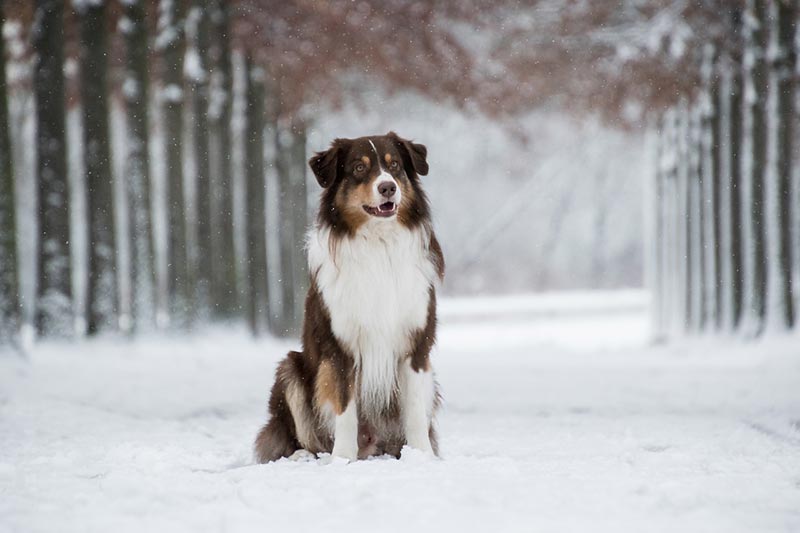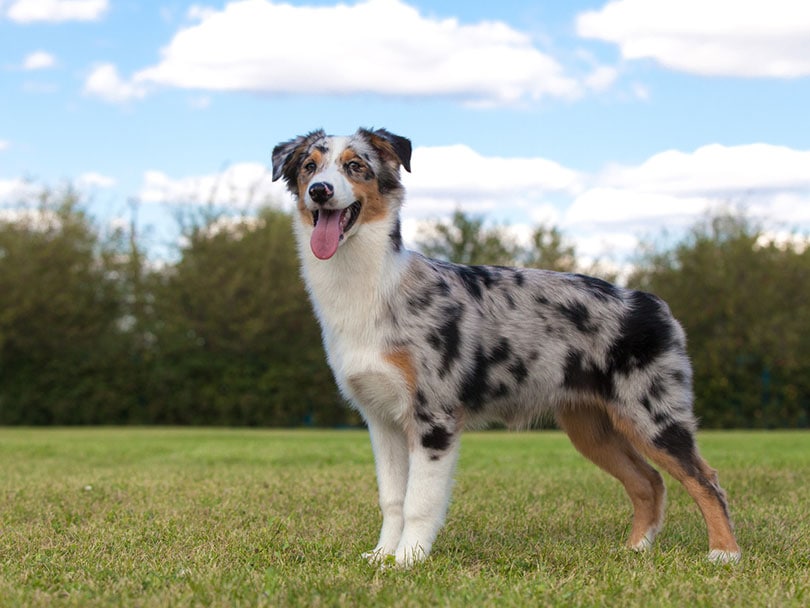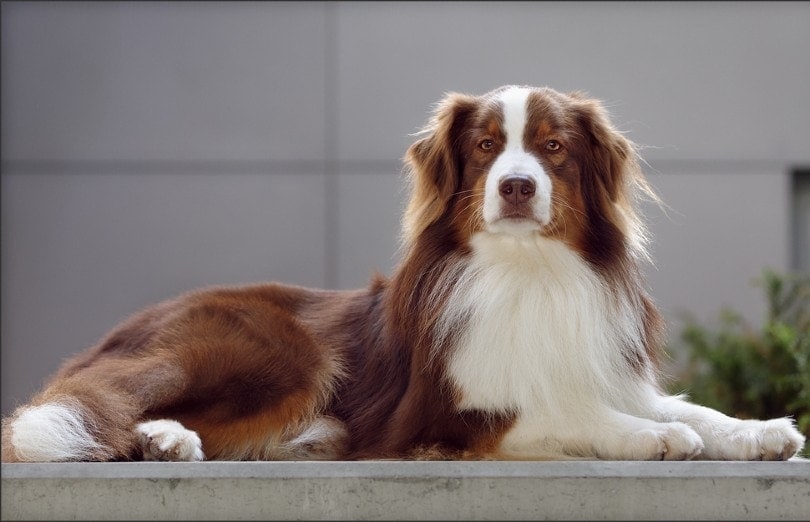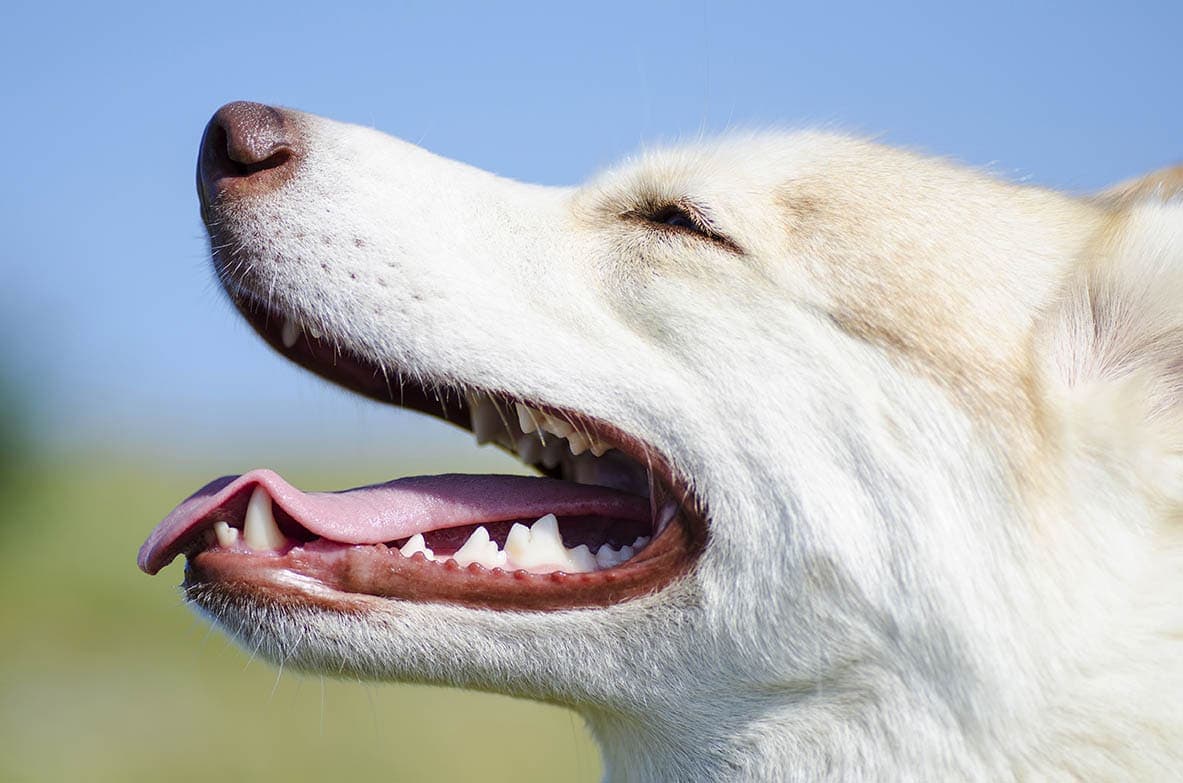Do Australian Shepherds Like the Cold? Fascinating Facts

Updated on

When the weather turns and the temperature drops, some owners may wonder whether Australian Shepherds like the cold and how much cold they can take.
Due to their thick double coats, Australian Shepherds don’t feel the cold much at all, despite hailing from a much warmer climate. The Australian Shepherd has no problem working in low temperatures, but every dog has its limit, as all dogs can get too cold.
Even dogs with thick coats can suffer from hypothermia if the temperature is low enough. Aussie Shepherds may appreciate cooler temperatures that will help keep them more comfortable, especially if they’re working dogs and are active during the day.
What Is the Best Temperature for Australian Shepherds?
The ideal temperature for the Australian Shepherd is around 68–74℉, depending on the weather and wind chill. Australian shepherds were developed in the Western United States, and their ancestors were from the Basque region of Spain. The breed is used to working in warmer temperatures.
When considering how much cold an Aussie Shepherd can take, there are factors other than the temperature itself. Wind chill and moisture can also affect how much of the cold your dog can handle, and if it begins to rain or snow and your dog gets wet, they get much colder much faster. However, hyperthermia (getting too hot) is just as much of a concern as hypothermia, as heat exhaustion can easily occur.

Do Australian Shepherds Need a Coat in the Cold?
A light raincoat for your Australian Shepherd can be all the protection from the elements they need since they already have an insulating fur coat of their own. The Aussies Shepherd’s double coat provides warmth and water resistance; the long guard hairs of the top coat provide water resistance and protection for the soft, downy “undercoat” that gives insulation.
These hairs act as excellent insulation that keeps the Australian Shepherd both cool and warm when needed, and they don’t often need any additional clothing. The exception would be if a puppy or elderly dog went out into the cold, in which case they may need a light coat to keep them extra protected from the cold.
Are Australian Shepherds Inside or Outside Dogs?
While this breed’s hardiness may make you think they should live outside, the Australian Shepherd is a very social dog that thrives on human interaction and time with its family. They’re also highly intelligent and want to be as much around their family as possible. Your Aussie Shepherd deserves to be near you, and while some dogs do well outdoors in purpose-built kennels, we recommend keeping your dog together with you in the family home.

Can Australian Shepherds Be Out in the Snow?
The Australian Shepherd’s insulating double coat offers good protection and warmth in the snow, but not for long. Some dog breeds, such as the Siberian Husky, have adaptations helping them live comfortably in deep snow and freezing temperatures (such as curling their tail over their nose to protect from frostbite).
However, as Australian Shepherds were bred in warmer climates, they don’t have these protections. Aussie Shepherds can probably be out in the snow for a few hours, but if it’s too cold for you, it’s too cold for your dog.
Tips to Keep Your Australian Shepherd Safe in the Cold
- Check the expected weather and any weather warnings before you go out.
- If the temperature is exceptionally cold, or if it’s raining, put a waterproof coat on your dog.
- Don’t stay out in the cold for too long. If it’s too cold for you, it’s too cold for them.
- Watch out for ice and slick patches to avoid your dog slipping and getting injured.
- If the ground is icy, check your dog’s paw pads for signs of early frostbite.
- Be mindful of your dog’s activity level; if your Aussie is running around and being active, they’ll keep warmer for longer.
- Consider your dog’s age. If they’re a puppy or elderly, they won’t be able to stay out in the cold for very long.
Final Thoughts
The Australian Shepherd is well protected from all but the coldest weather and will appreciate the cooler temperatures on a crisp winter morning walk. However, every dog has a limit, so be careful that your Aussie doesn’t get too cold or develop hypothermia, and be sensible when spending time outdoors.
Checking the weather and providing dogs more susceptible to the cold (puppies and elderly dogs) with a light coat can make all the difference and help keep them safe and ensure you both enjoy your time in the cold.
See also:
Featured Image Credit: RebeccasPictures, Pixabay











